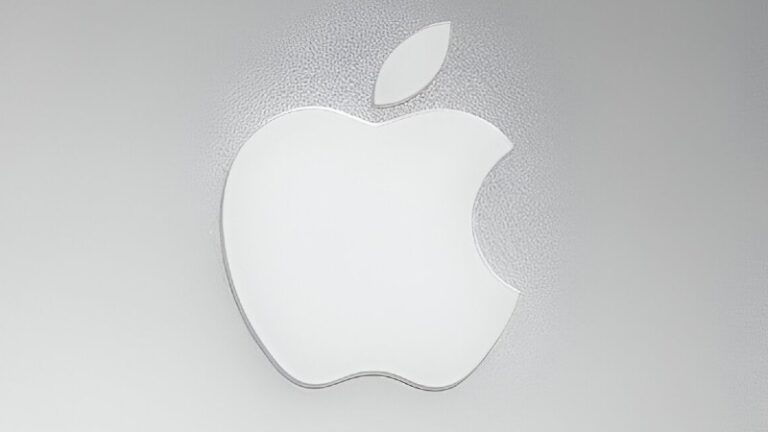As Apple prepares to launch the highly anticipated iPhone 17 series, design enthusiasts and tech fans alike are buzzing about the radical changes shaping this latest iteration. Far from a simple refresh, the iPhone 17 introduces a distinctive design language that balances bold aesthetics, functional innovation, and user-centric engineering.
What’s New in the iPhone 17 Design?
Apple’s iPhone 17 series marks a pivotal design shift, characterized by:
- Thicker Pro Max Model for enhanced battery life
- Wide, Visor-Style Rear Camera Island spanning the phone’s width
- Material Shift from stainless steel/titanium to aluminum in Pro models
- Repositioned Apple Logo creating a fresh visual balance
- Ultra-Thin iPhone 17 Air variant offering a sleek alternative
While these points have been broadly discussed in leaks and rumors, this article goes beyond the surface to analyze the broader implications and design philosophy driving these changes.
Thicker iPhone 17 Pro Max
Thickness vs Battery Life
The iPhone 17 Pro Max is rumored to be the thickest iPhone ever, increasing from 8.25mm to roughly 8.725mm. Though this might seem like a step backward in a market obsessed with slim phones, the reasoning is compelling—Apple is focusing on significantly improving battery capacity.
| Model | Thickness (mm) | Estimated Battery Capacity | Expected User Benefit |
|---|---|---|---|
| iPhone 16 Pro Max | 8.25 | Approx. 4500 mAh | Standard battery life |
| iPhone 17 Pro Max | 8.725 | Estimated 15-20% increase | Longer daily usage, improved endurance |
For heavy users—gamers, videographers, and professionals relying on extended screen time—the extra thickness is a welcome compromise. Apple is signaling a shift towards prioritizing real-world usability over aesthetic minimalism.
Real-World Impact
Imagine a content creator filming in 4K all day. Previous iPhones might require mid-day charging or carrying bulky power banks. The thicker Pro Max could extend shooting time by several hours, allowing uninterrupted creativity. This highlights Apple’s user-focused design evolution.
A Statement of Function and Style
From Bump to Visor
Apple’s camera design has evolved from modest bumps to a dominating wide panel that stretches across the back. This “visor” style camera island serves multiple purposes:
- Space for Advanced Optics: Larger sensors and more sophisticated lenses require room.
- Heat Dissipation: A bigger island can help manage heat from powerful camera components.
- Consistent Color Matching: The camera panel now often matches the phone color, softening the visual impact.
Design Implications
Visually, the wide camera island changes the phone’s rear balance and feel. It introduces a modern industrial look—bold and unapologetic, setting the iPhone 17 apart from previous generations and competitors.
Camera Island Width Comparison
| Model | Camera Island Width (mm) | Visual Impact |
|---|---|---|
| iPhone 16 Pro | Approx. 35 | Compact, protruding bump |
| iPhone 17 Pro | Approx. 65-70 | Wide, visor-style panel spanning rear |
Practical Benefits
Besides aesthetics, the visor-style island can house more components internally, possibly allowing for better stabilization, new sensors, or advanced zoom capabilities. This may result in richer photography and videography features that users can experience directly.
Material Evolution
In a surprising pivot, Apple is rumored to shift from stainless steel or titanium frames in Pro models back to aluminum. This move has multiple consequences:
- Weight Reduction: Aluminum is lighter, which may help offset the thicker battery and camera island.
- Cost Efficiency: Aluminum is less expensive, which might influence pricing or investment in other hardware.
- Thermal Management: Aluminum dissipates heat better, beneficial given the increased processing power and larger battery.
This material choice reveals Apple’s commitment to balancing durability, comfort, and performance rather than just premium feel.
Apple Logo Repositioned
Another subtle but meaningful change is the Apple logo’s relocation below the camera island, rather than its traditional centered position. This redesign is more than cosmetic—it represents:
- Visual Hierarchy: Prioritizing the new camera island as the design focal point.
- Brand Evolution: Apple subtly signaling a fresh chapter in its design philosophy.
- User Interaction: Potentially reducing logo smudging since the logo is farther from where fingers commonly rest.
While some users may find the new position unconventional, it clearly complements the broader design overhaul.
The Ultra-Thin iPhone 17 Air
Why an Ultra-Thin Model?
Amid the bulkier Pro Max, Apple introduces the iPhone 17 Air—an ultra-thin variant prioritizing sleekness and portability over maximum battery life and camera complexity.
- Single Camera with Wide Panel: Unique design stretching the camera panel across the back despite housing only one lens.
- Strikingly Thin Profile: Marketed as one of the thinnest smartphones, aimed at users valuing pocketability.
- Compromises and Trade-offs: Smaller battery and fewer cameras balanced by cutting-edge chipsets and RAM.
Competing with Flagship Rivals
The iPhone 17 Air is clearly designed to compete with ultra-slim Android flagships like Samsung Galaxy S25 Edge, offering a new choice for customers who want a premium Apple phone without the weight or bulk of Pro Max models.
Performance Design Synergy
The iPhone 17’s design changes are not just skin deep. They reflect a holistic approach where hardware improvements, software enhancements, and user experience form a cohesive package.
| Design Element | Performance Benefit | User Impact |
|---|---|---|
| Thicker Pro Max with Bigger Battery | Longer usage time, supports A19 Pro chip power demands | Less frequent charging, enhanced mobile productivity |
| Visor-Style Camera Island | Space for advanced sensors and cooling | Improved photo/video quality, less overheating |
| Aluminum Frame | Better heat dissipation, lighter weight | Comfortable handling, device longevity |
| Repositioned Apple Logo | Design balance and fingerprint management | Cleaner aesthetic, reduced smudging |
| Ultra-Thin iPhone 17 Air | Efficient chipset with limited battery size | Portability for minimalists, stylish alternative |
Key Takeaways:
- The thicker iPhone 17 Pro Max prioritizes battery life for heavy users.
- The wide visor-style camera island integrates advanced optics with bold design.
- Material shifts to aluminum optimize weight and thermal performance.
- Repositioned Apple logo redefines brand aesthetics and usability.
- The ultra-thin iPhone 17 Air appeals to minimalists seeking portability.
As Apple’s September 2025 launch approaches, the iPhone 17 design will undoubtedly become a focal point of discussion—and a compelling choice for a wide range of users looking for the next evolution in smartphone excellence.
Conclusion
The iPhone 17 design ushers in one of Apple’s most significant aesthetic and functional shifts in years. By embracing thickness where it counts, pioneering a new camera island style, experimenting with materials, and repositioning brand elements, Apple is thoughtfully evolving its flagship. The introduction of the ultra-thin iPhone 17 Air demonstrates an understanding of diverse user preferences, offering both power and elegance in one lineup.
Looking beyond the leaks and rumors, the iPhone 17 design story is about Apple rebalancing its priorities: performance, usability, and distinctive style—not just sleekness for its own sake. For users, this means more choices and a more purposeful device that adapts to different lifestyles without compromise.
Frequently Asked Questions (FAQs)
What are the main design changes in the iPhone 17 series?
The iPhone 17 introduces a wide visor-style rear camera island, a thicker Pro Max model for better battery life, a material shift to aluminum frames, and a repositioned Apple logo. Additionally, there is an ultra-thin iPhone 17 Air variant designed for portability.
Why is the iPhone 17 Pro Max thicker than previous models?
The increased thickness accommodates a larger battery, which significantly improves battery life for power users without compromising on performance.
What is unique about the iPhone 17’s camera design?
The iPhone 17 features a wide, visor-style camera island that spans the width of the phone, allowing more space for advanced sensors and better heat dissipation compared to previous camera bumps.
Has Apple changed the materials used in the iPhone 17?
Yes, Apple is reportedly shifting from stainless steel or titanium to aluminum for the iPhone 17 Pro models, which reduces weight and improves thermal management.
What is the iPhone 17 Air and how is its design different?
The iPhone 17 Air is an ultra-thin variant aimed at users who prefer a lighter, slimmer device. It features a unique wide camera panel despite having a single lens, balancing style and portability.


